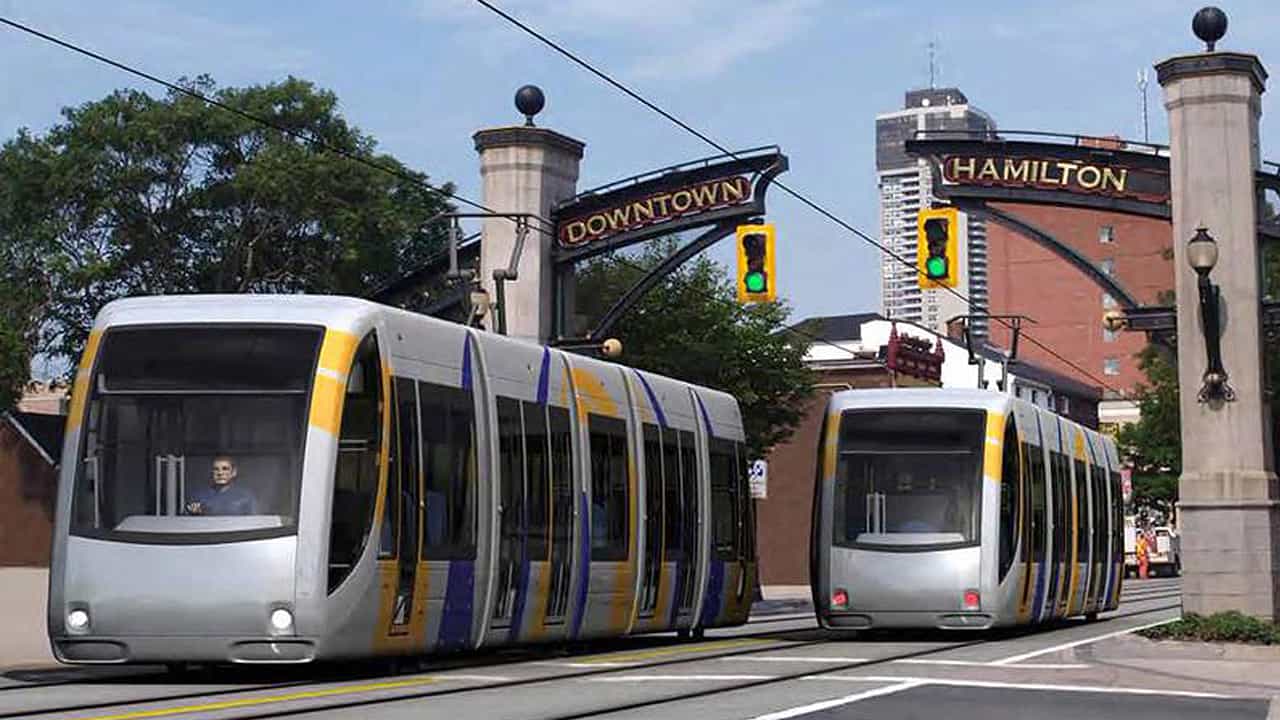Hamilton defers decision on preferred LRT model to March 21 committee meeting
Published January 29, 2024 at 6:07 pm

After nearly eight hours of debate and dozens of public delegations on a staff recommendation that the long awaited Hamilton Light Rail System (LRT) be run by a private contractor instead of the City, a subcommittee has kicked the plan to a General Issues Committee meeting in March with no decision rendered.
Nearly every delegation from residents and union members told councillors delegating operations of the $3.4 billion, 14-km project would be a bad idea, with similar projects in Ottawa and Waterloo cited as examples.
Four options were on the table for committee members, with the preferred model having a private company operate the system for ten years, with the City having the chance to take over at that time.
The benefit of that option, the report declared, was the minimization of risk, especially from construction to start-up, and that’s why it’s the model Hamilton should be voting for, said Ward 1 Councillor Maureen Wilson.
“There’s too much risk if we take on operations,” she said. “In ten years time, that’s when we can come back to that decision.”
Hamiltonians who showed up in droves to have their say thought otherwise, with nearly all in the belief a public transit should be operated by the public, not private contractors.

Eric Tuck, representing the Amalgamated Transit Union, Local 107, said there were numerous examples of private companies operating public transit projects, all with “disastrous” affects.
Tuck cited Ottawa’s light rail system as an example, where a public inquiry into the issues plaguing the system found “deliberate malfeasance” resulted in an error-ridden, unreliable system that only got underway after a 16-month delay.
“Public transit should not be private. It costs more and delivers less,” the union president said. “The political risk will not fall to the operators, but on this council.”
Many of the public delegates also spoke of Hamilton Street Transit’s expertise in running transit in the city for more than a century.
“We do know how to move people and we are the best at it,” Tuck said.
The other main bone of contention for Tuck and the public delegates – which included a slightly garbled virtual address from Toronto Councillor Josh Matlow – was the lack of control, since much of the Hamilton LRT project falls under the responsibility of Metrolinx.
In case of a tragedy, for example, getting immediate information from the Crown agency might be difficult since Metrolinx answers to the Province, not Hamilton Council.
Committee was presented the four options in September, with a scoring system giving top marks for Option 2, followed by Option 4.
- Model 1: Third party performs all ‘Operational Activities.’ “Staff are not presently aware of any use of this model for LRT systems in Ontario.”
- Model 2: City performs ‘Passenger Interface Provider Activities.’ “This model is presently used in the Region of Waterloo’s LRT system and will also be used for the Hazel McCallion Line in Peel Region.”
- Model 3: City performs ‘LRT Vehicle Operations and Passenger Interface Provider Activities.’ “Staff is not presently aware of the use of this model for LRT systems in Ontario. However, this model is similar GO Transit’s operating arrangement, whereby a third party provides staffing and operates GO under a contract with Metrolinx.”
- Model 4: City performs all ‘Operational Activities.’ “This is the approach planned for operating the Eglinton Crosstown and Finch West lines, whereby the TTC will perform all operating functions, and the City of Ottawa’s Confederation Line, which is being operated by OC Transpo.”
A fifth model not on the table has Hamilton taking on maintenance as well as operations.
The motion offered by Mayor Andrea Horwath to push the vote forward to March 21 was met with some confusion by committee members, as LRT Sub-Committee decisions have to go the General Issues Committee (GIC) anyway, but the move takes the vote to March 21 instead of the next GIC meeting on February 7.
“There will never ever, ever be a public project of this significance, “said Wilson. “What model will us the best chance of success? That’s what we have to decide.”

INthehammer's Editorial Standards and Policies





